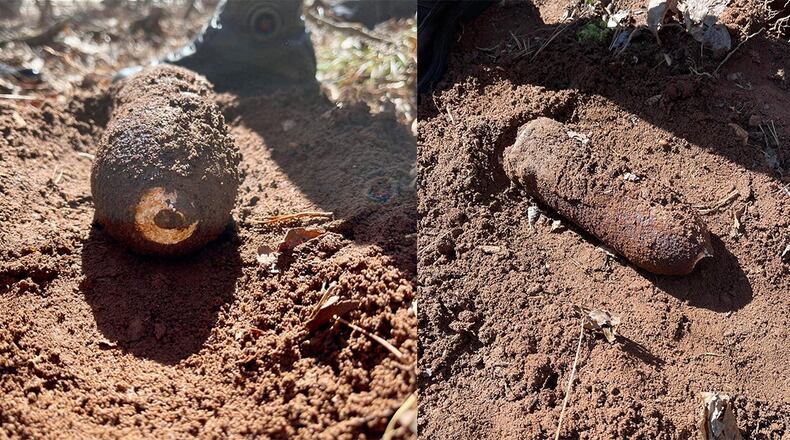A Cobb County bomb squad was called Monday to Kennesaw Mountain National Battlefield, where they safely removed an unexploded Civil War shell. It wasn’t until the agency posted about the incident on Facebook, however, that the fireworks started.
After a Cobb police recruiting page shared the story of removing the 157-year-old Union parrot shell from the battlefield, the agency was met with a barrage of questions and criticism from Civil War history buffs.
“Absolute travesty to destroy this historical object. These are very easy to make inert,” one commenter said.
“Sad that ‘archeologists’ don’t know how easy it is to make these safe, instead of destroying them,” said another.
According to Heath Jones, one of the creators of the popular History Seekers Facebook page, the situation is more complex. A former law enforcement officer based in Alabama, Jones said the archaeology team was likely following protocol and that any unexploded ordnance should be handled with absolute caution until it was properly identified.
Cobb police responding to comments about the historical nature of the shell said “they would love nothing more than to preserve this piece of history, however there is no way to safely render it without counter charging it.”
Bomb technicians would try to use “the smallest charge appropriate” to perforate the case, police said, though they acknowledged that the artifact could be lost in the process.
Jones was among many participants in the conversation volunteering help and connections to historical experts in order to preserve the shell. The History Seekers team has recovered similar shells in their years of relic hunting.
“Civil War shells were made with black powder,” Jones said. “Black powder becomes inert when it gets wet.”
The use of black powder makes Civil War shells much more likely to be inactive than ordnance manufactured later. Shells in World Wars I and II were made with high explosives, which could still be highly dangerous.
Jones believes the shell recovered by the Cobb bomb squad used a paper time fuse to ignite the black powder inside. The shell was designed so that the fuse would be lit by the same charge that fired it. When the paper fuse burned to the black powder inside, it would ignite and rupture the cast iron casing, sending shrapnel flying in all directions.
Because the fuse was little more than paper in a hole, Jones said it’s extremely likely that groundwater penetrated the shell and saturated the black powder inside, especially over the course of the 157 years buried by Kennesaw Mountain.
Jones offered to connect the Cobb bomb squad with one of his frequent collaborators, Steve Phillips, who he said had defused more than 2,000 similar shells over the years. Jones credited Phillips with defusing many of the shells on display at the Atlanta History Center.
According to police, the shell will be stored until it can be rendered safe. Jones and many others are hoping bomb technicians will call upon historical experts to defuse the explosive without destroying it.
About the Author
The Latest
Featured


